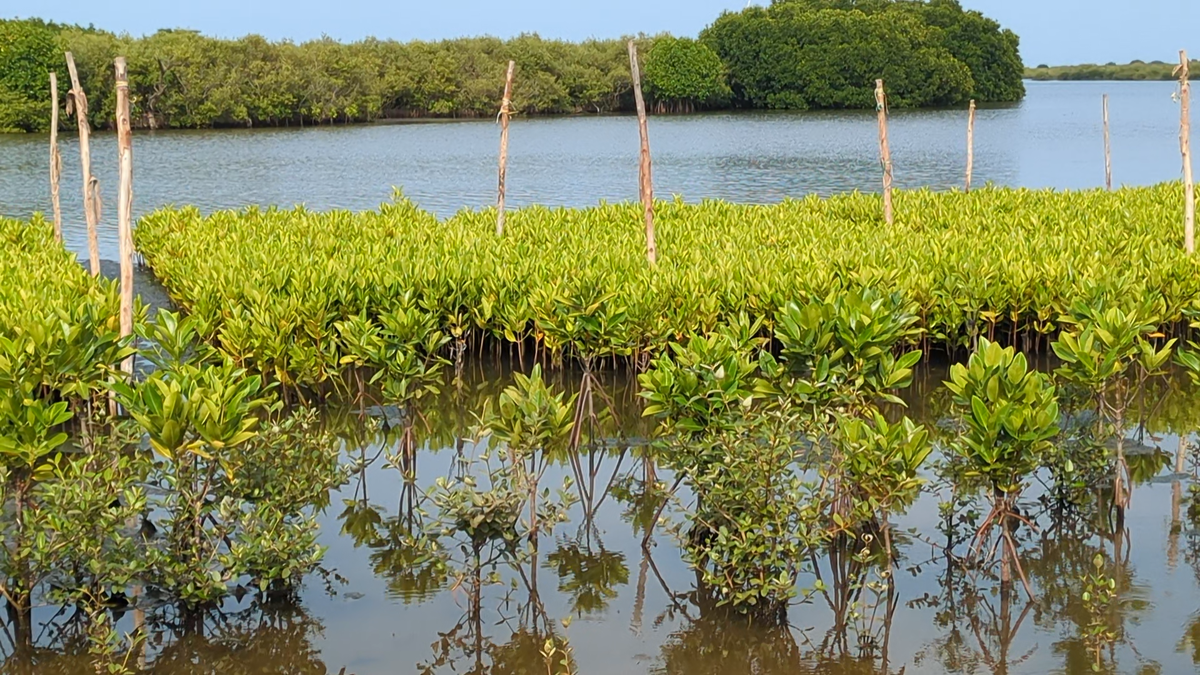New method in Pichavaram uses tidal fluctuations to improve the survival of mangrove saplings
By Geetha Srimathi
Copyright thehindu

A new tidal mangrove nursery has been established at Killai near Pichavaram in Cuddalore district. The first of its kind in Tamil Nadu, the nursery holds around three lakh saplings, and is designed for the hardening of mangrove seedlings in natural tidal conditions.
Unlike conventional nurseries, where even the use of saltwater cannot fully replicate the coastal environment, this set-up makes use of natural tidal movement. Seedlings are placed on floating platforms and kept in tidal waters for six to eight months.
During this period, they acclimatise themselves to salinity, water movement, and tidal fluctuations. As a result, the seedlings undergo a physical transformation from soft, tender growth to a hardier form with thicker stems. This makes them more resilient and better suited for survival in coastal environments, and leads to a higher post-transplant survival rate.
“The survival rate is more than 90%,” said B. Iqbal, Forest Range Officer, who developed the method under the technical guidance of A. Gopu, Assistant Conservator of Forests, Green Tamil Nadu Mission.
District Forest Officer S. Gurusamy said four species are being raised in the nursery — Avicennia marina, Avicennia officinalis, Rhizophora mucronata, and Rhizophora apiculata. While all mangrove species could potentially benefit from the method, these four were selected for their size. Smaller species are more vulnerable to submersion during high tides.
Pichavaram is home to 13 true mangrove species, and the new nursery is expected to support long-term restoration across the region under the Green Tamil Nadu Mission and the World Bank-funded Tamil Nadu Coastal Restoration Mission (TN-SHORE).
One of the main advantages of this approach, noted Supriya Sahu, Additional Chief Secretary, Departments of Environment, Climate Change and Forests, is that it facilitates year-round propagation, removing the constraints of short seed collection windows and ensuring a steady supply of planting material.



